Proposal to Update Baybayin: The Ancient Filipino Script 🇵🇭
Writing Baybayin in the 21st Century
The objective of this article is to analyze the ancient Filipino writing system and to present phonetic modifications in order for the script to be more efficient to use today.
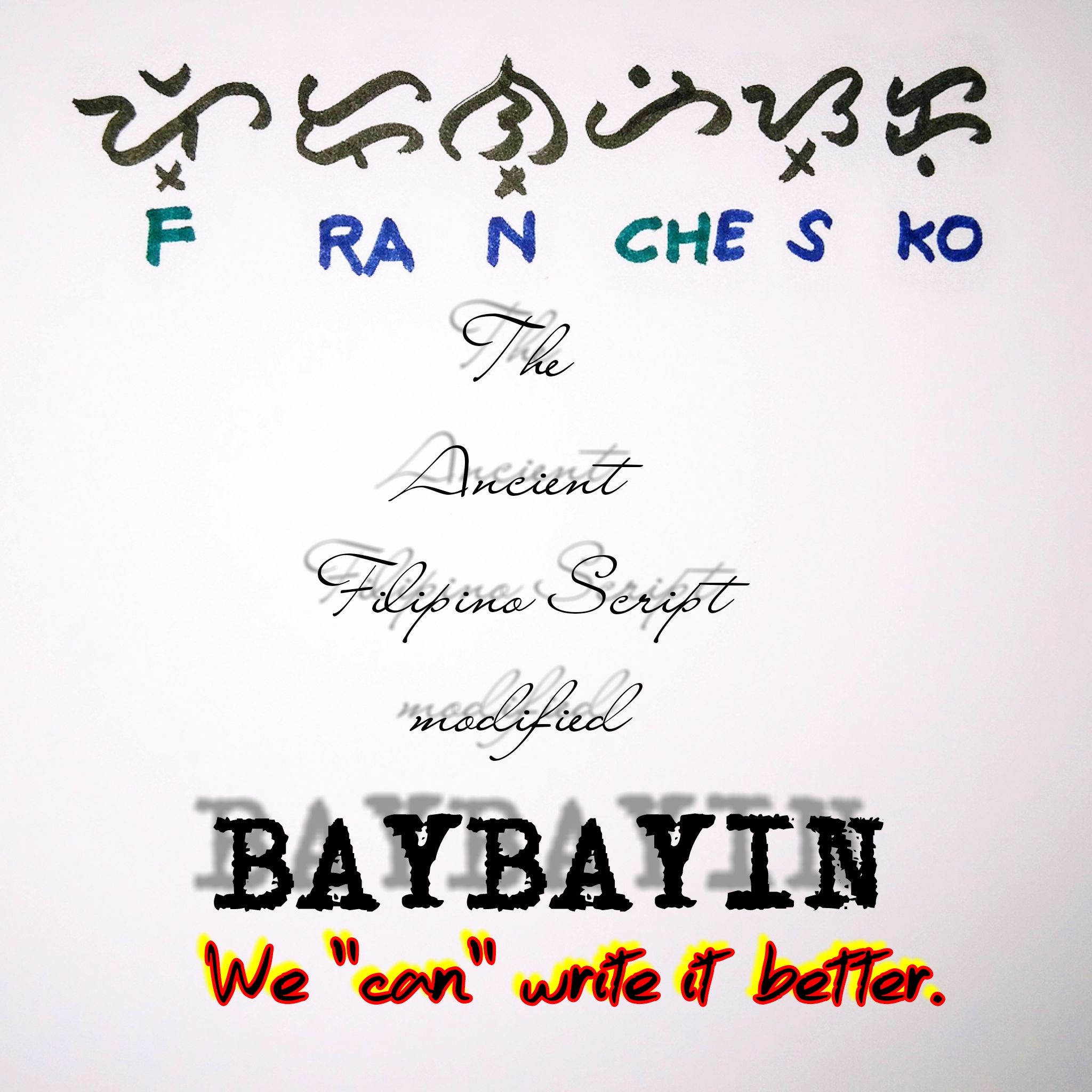
It was 500 years ago since this writing system was last used or widely known. This is a time to be sensitive of the revival and use and to make sure it is something progressive to the language.
Baybayin is a writing system used by the early Filipinos precolonial era. It was initially used to write in tagalog and later on spread to other regions and islands.
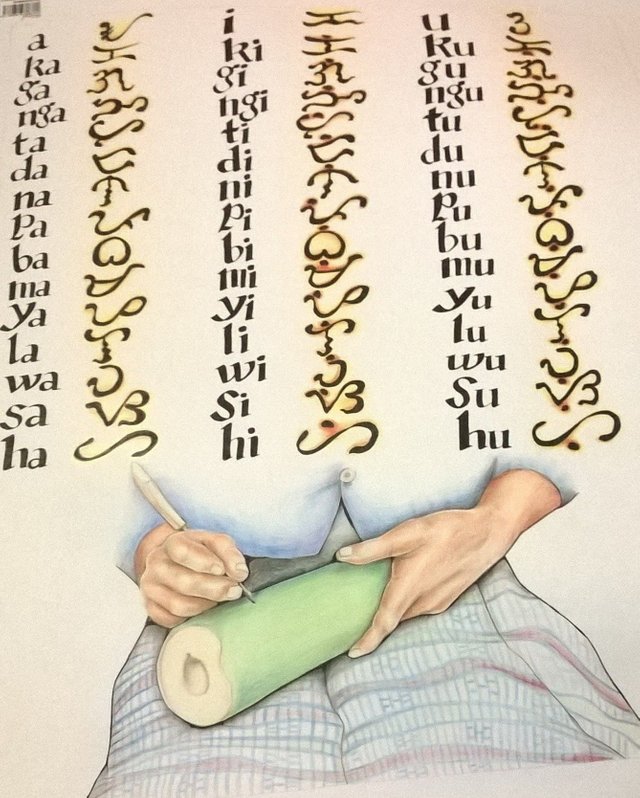
Art by @jacinta.sevilla
The Revival of Baybayin
By @lucaaxus
dr. Luca Azzolini, Ca' Foscari University of Venice, Italy
In Languages and Cultures of Asia and Mediterranean Africa
An alphabet, a script, is a product of a culture and of a language, and it has the capacity to reflect linguistic peculiarities of the languages it represents and, sometimes, their history as well.
Baybayin is the historical alphabet originally created by the filipino people before the age of Spanish colonization started.
Though it was replaced by the more versatile latin script, with whom many new foreign terms came into everyday use in the Philippines (most of all, at first from Spanish, later also from English), it should be national interest for the Republic to preserve this fascinating and nowadays almost mysterious aspect of filipino languages. Updating it would make it easier to be used, and only its use would make it possible to give it a new birth, probably never substituting the role that Latin script acquired (that would mean trying to erase -or rewrite- History), but giving it the importance and the pride it deserves.
Filipinos should learn to write it just like Koreans learn hanja at school, or Malay people the use of jawi, while using respectively in everyday written language hangeul and Latin script.
As previously said, Latin script was adopted in the Philippines because of the Spanish rule of the country, and it remained the main (or only) script to represent filipino (tagalog) and other filipino languages and dialects (like Cebuano, Visaya, etc) because it could easily represent new sounds that did not exist before in the filipino linguistic environment: phonemes like /sha/, /f/, and many more.
This fact, together with the missing update of the native script, made Baybayin obsolete and not capable to represent the new form of the afore mentioned Asian languages, resulting in a significative cultural loss for the modern language, for the sake of its simplification.
Though, its beauty is evident and eye-striking, and its gentle curved forms are unique.
Sometimes a script needs to be reviewed, and updated, to keep (or restart) representing a language in a more effective way.
There are many cases we already know and do not think about everyday, in many languages. To adapt Latin script to the innumerable languages of the world it is used for today, we can find many examples of diacritics that slightly change the sounds of the letters: in Spanish, adding a tilde on the letter N makes Ñ, the /ɲ/ sound present in "España" (Spain).
Compounded letters are used to represent some sounds as well: in Italian, the same ñ sound is represented by "gn". The word "Spain" becomes "Spagna".
These adaptations are not exclusive of Latin script, obviously.
In Japanese, e.g., if we add a circle diacritic to the syllable ho ほ, we obtain po ぽ.
In the Korean alphabet (Hangeul/Chosŏn'gŭl), if we add a dot above the letter j/ch ㅈ, we obtain the aspirated consonant ch' ㅊ.
At this point, our question is: why cannot we update Baybayin (often referred to as "Alibata" in the Philippines) with new diacritics to give it new life, and adapt it to contemporaneity?
What for? If it was not clearified enough before, in order to preserve it and give it the dignity it deserves, and (our dream is) also new life.
The choice between compounding letters and diacritics is merely technical, and could barely reflect a personal preference rather than being one more efficient than the other.
As said before, the ɲ sound is equally effectively rendered in Spanish and Italians by the different choices of ñ/gn, even though the use of that specific diacritic probably makes its reading the least ambiguous possible (gn can only be ɲ in Italian, anyway, because there are no words with the phonic combination of g+n like we have in English in the word "recognize").
Influences of Baybayin Writing System
However before that, many influences from other countries paved way to the creation of baybayin.
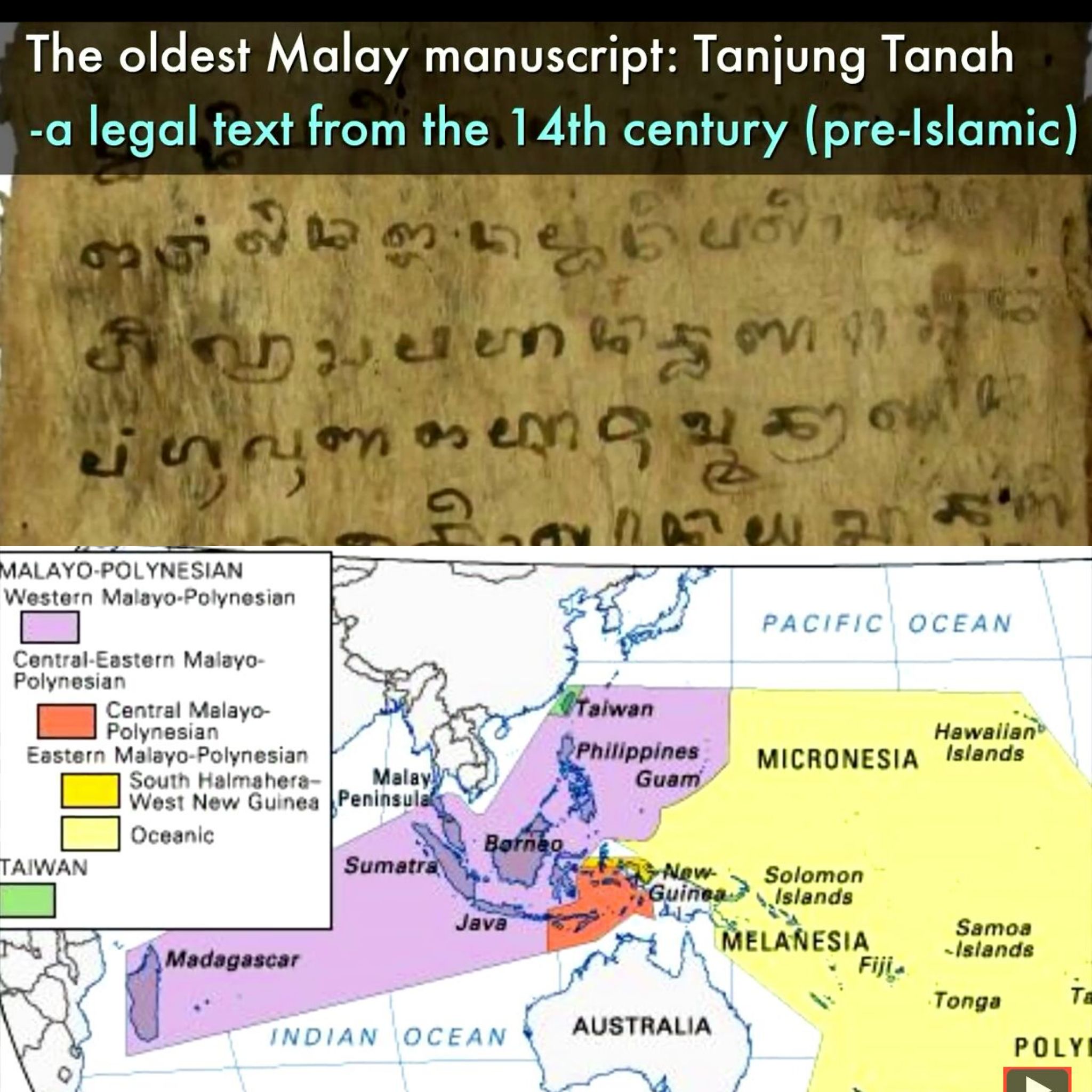
ctto
The Malaysian language was once written in a brahmic writing system or Indian writing system.
And Malaysians were one of the first who ever came to the Philippines. Added to that, the language spoken in the Philippines and Malaysia are of the same linguistic family.
We can say that in the neighborhood of countries, each plays a part in sharing and forming the languages of the linguistic tree.
Brahmic languages are highly influenced by Phoenician, arabic, aramaic languages and if we observe the structure of the writing systems they have, they are similar to each other. Since language is shared and taught, when it is used it is expected to evolve phonetically, morphologically, and with all the other aspects such as the syntax and semantics (other southeast asian languages play a part in influence too)
But there are many aspects that do not change, like the use of diacritics (symbols and marks) which change the meaning of a word and also the consonants with a versatile vowel attached to it.
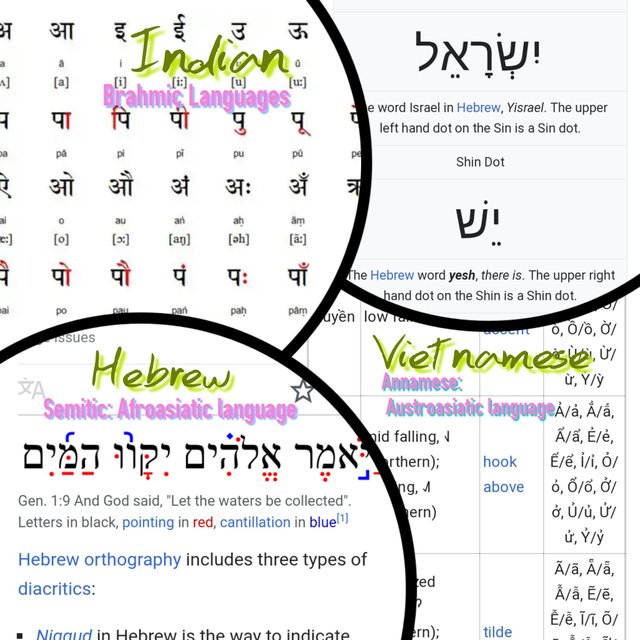
In hebrew, they call their diacritics niqqud:
nikhod
Placing a few dots and symbols changes the pronunciation of a letter and in some cases, it changes the word meaning and context of the utterance especially when it is a prayer or praise as written in the bible.
Although nowadays, typing hebrew no longer requires diacritical marks:
ניקוד
nikhod
Writers and readers preemptively read Hebrew and it is not hard to do for them since they are native speakers and know all words already, but very hard for foreigners to learn.
Hindi Barkhadi
As told by @birjudanak, diacritical marks of Hindi language is called barkhadi
Similarly, it changes (1) the sound of utterance of a word and (2) can change a words meaning as a whole.
Since baybayin is brahmic by roots, we can observe and follow diacritics of this script and incorporate it to baybayin.
Languahe is dynamic, take vietnamese language, they use latin script but since their language is tonal - the addition of more diacritics is necessary and for baybayin, that is also the case if we want it to be more efficient and convenient to use.
The letters of Baybayin
I started to make a draft of the letters as @jeseemei had presented in her post about baybayin.
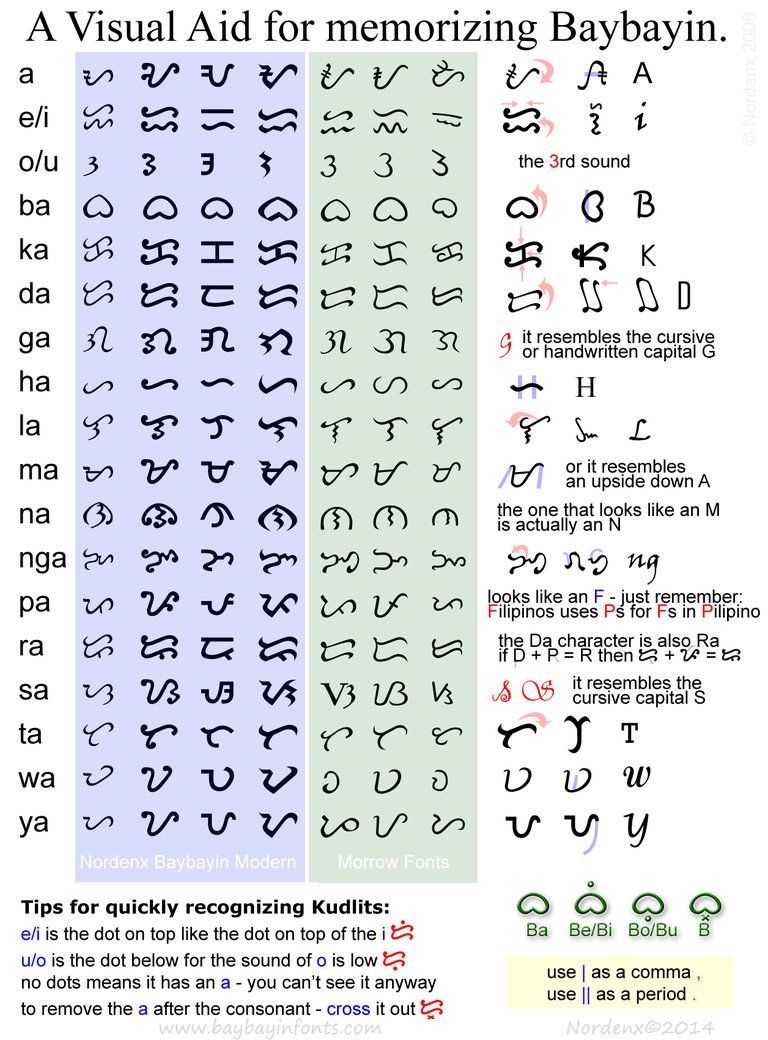
Baybayin: Ancient Filipino Script by @jeseemei
This is a very helpful guide and neatly presented.
I started out with a draft of the letters, also helps me to memorize them by writing.

Very efficient to use with Filipino language but, I started to asses how broad is its scope?
Many people will prefer to use latin script if baybayin is not as effective for communication.
A language must not regress, in present, our writing system is outdated.
We cannot write the following
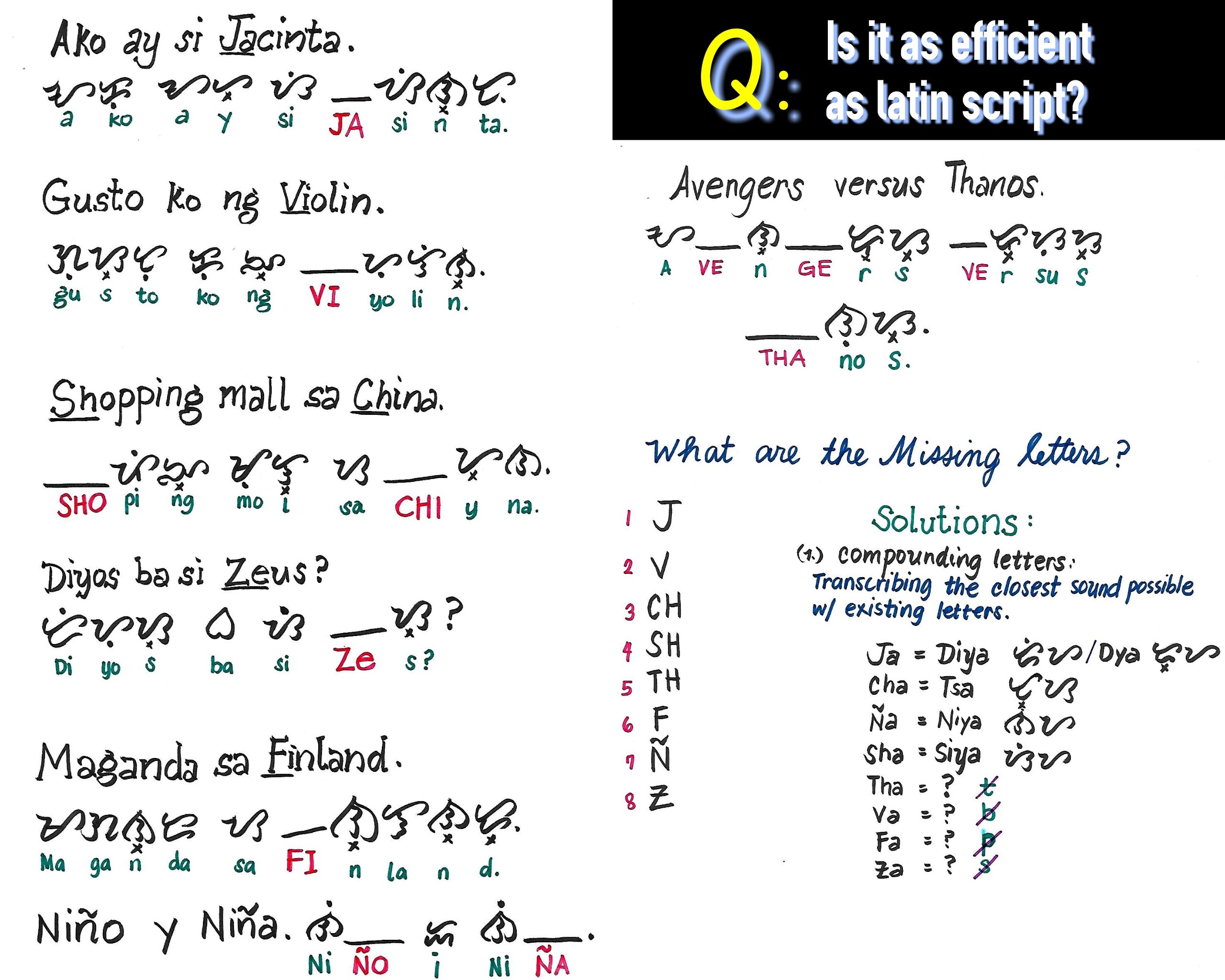
We cannot write new words and nouns that start with non-filipino alphabet. I cannot even write my name.
Baybayin lacks:
Blends and diagraphs, blends are voiced letters. Examples are letters /v/ and /z/.
Diagraphs are combination of consonants which are voiceless. Examples are letters /sh/, /ch/ and /th/
Also, borrowed from foreign alphabets is letters /f/, /j/ and /ñ/
The first option (1)
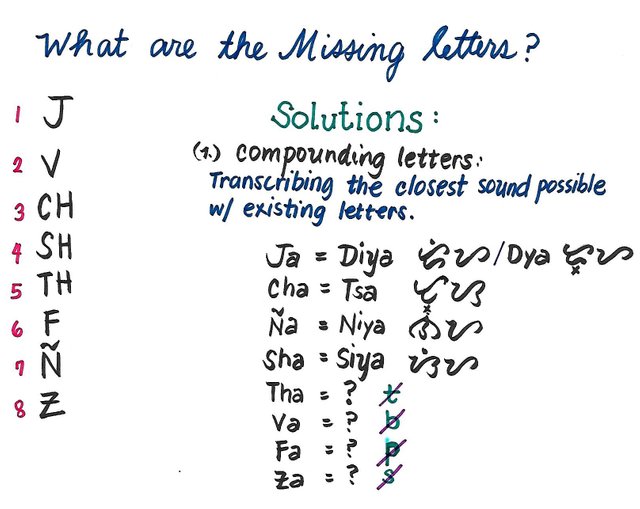
Is "compounding letters" which means using a combination of baybayin letters to form a sound similar to the sound of the new letter.
This can be a good substitute for missing letters but it can be confusing and tedious to write a clump of letters just to represent one syllable.
Filipinos use latin script and learn new sounds automatically with the symbol, so why use a writing system that can do less?
It seems counterproductive despite its aesthetically pleasing form, it cannot compensate the inconvenience.
Option Two (2)
Introduce new Diacritics or symbols

The suggestion
I created two diacritics to be used on existing baybayin letters so they can represent new sounds to be applied for borrowed words and names etc.
The first one is a bow type curve and it will be placed on top of the letter. This will be used for most new sounds. Especially for the voiced consonants. /V/, /z/… and so on.
The second diacritic is a hook type and only applied for /CH/
Why use /h/ to represent /sh/ and /ch/?
They belong to the fricative family, it is an utterance of letters through a puff of air. Letter /h/ is a glottal fricative and /sh/ is a palatal fricative, and /ch/ is an affricate (fricative with a strong obstruction).
Now it is possible

With this simple addition or update, baybayin can be convenient to use as well.
We can write many more things. Transcription can either be as heard or literally as how the latin script is spelled but that will most likely cause confusion.
I see baybayin and latin script side by side on this one, both scripts must be kept.
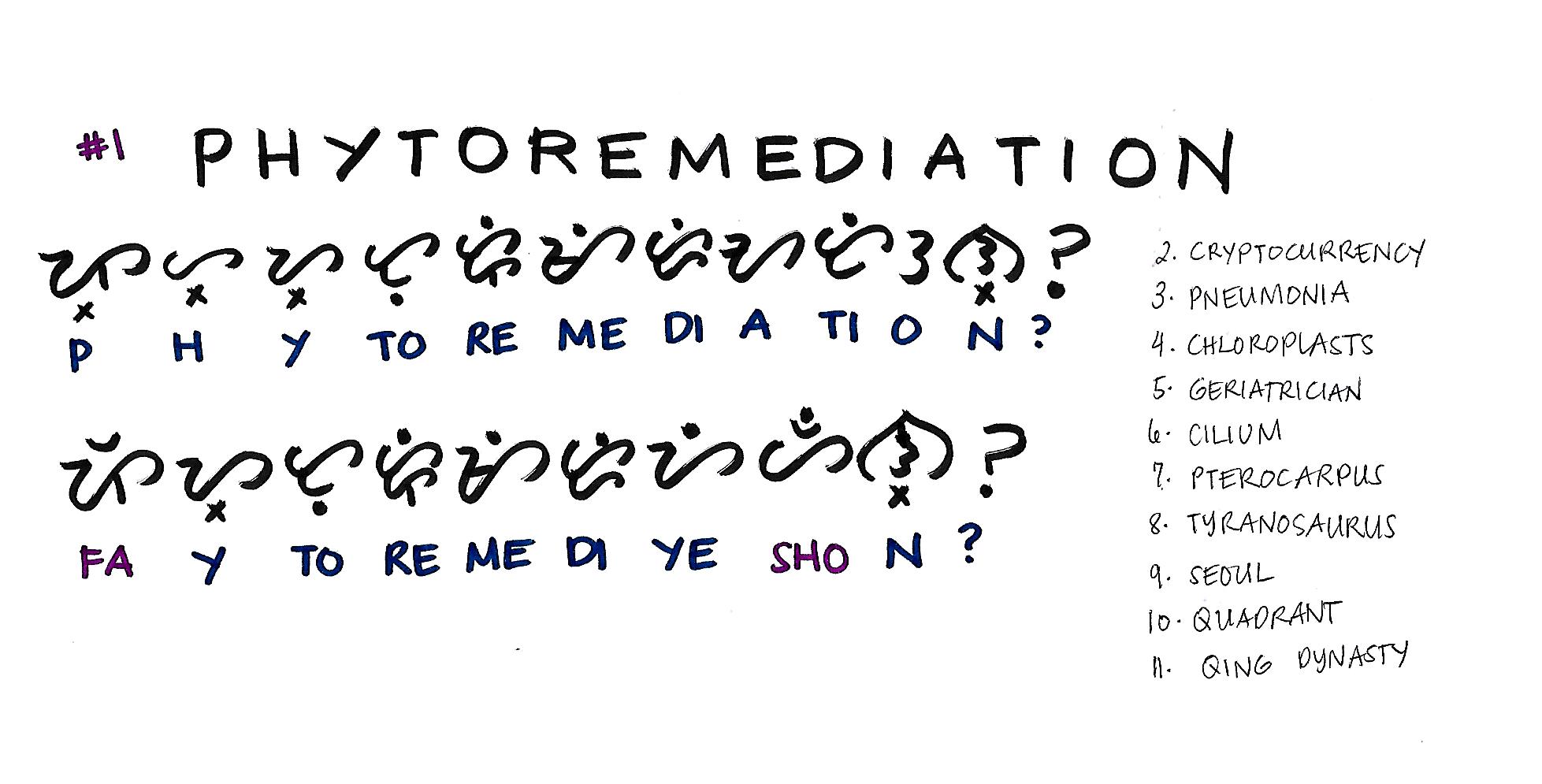
Which is better?
This is a big question to users of baybayin, how to transcribe. As my linguist friend @lucaaxus (dr. Azzolini) argues, borrowed words must be spelled as it is heard. Just as Spanish word guapa is adopted in Filipino, particularly Visaya as gwapa. Thus "faytoremediyeshion" is a better option.
In anycase, baybayin can be subbed with latin script to be more precise and to avoid confusion.
MY COMPLETE (and modified) BAYBAYIN
A friend of mine, two friends in particular were discussing baybayin with me.
They suggested that /i/ and /e/, /o/ and /u/ should also be specific.
SOLVING this AMBIGUITY

@deveerei is sad because his name sounds so weird especially if misinterpreted. Also, @aalagenesis also wondered if she should spell her name with /dye/ for /je/ sound for genesis or /di.ye/ combination.
New vowel diacritics
As you can see I used the "umlaut" /ü/ Diacritic or the double dots
- One dot on top for /e/ vowels
- Two smaller dots on top for /i/ vowels
- One dot at the bottom for /o/ vowels
- Two bottom dots for /u/ vowels
Applying all new Diacritics so far, we can spell everything!
Extra marks also make the script more creative.
I WOULD LIKE TO HEAR WHAT YOU THINK.
Many people are hesitant towards the new proposed bill to revive baybayin.
They say it is outdated, No one will know how to read and write, it will create gaps between generations and also cost a fortune to replace all documents with baybayin.
To this, I say, there's nothing wrong with using latin and baybayin together.
In this way we are protecting and reviving a beautiful aspect of our culture. At the same time, retaining latin script, we are being open towards the globalization we are living in.
MABUHAY BAYBAYIN!
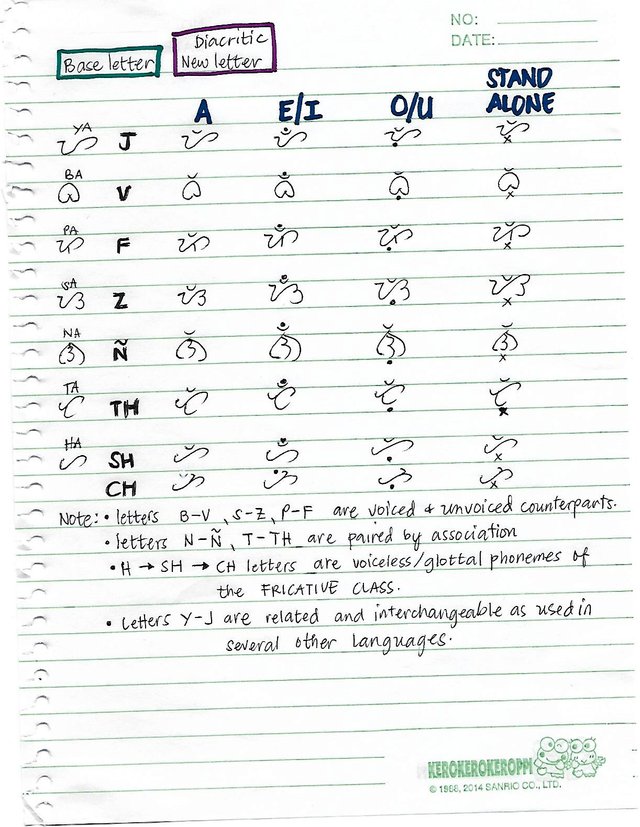
Please take note, this is only an informal suggestion and a personal opinion on baybayin and changes it could have to be better.
Special thanks to my friends who helped me understand and thoroughly think this through!
Luca Azzolini, Birju Danak, Glenn, @Deveerei, @Jeseemei, and @Aalagenesis.
♥️
MARAMING SALAMAT PO ✨
THANK YOU FOR STOPPING BY 🇵🇭
I recommend these
@steemgigs
@blocktrades
@precise
@cloh76.witness
@ausbitbank
SOME AWESOME BLOGGERS
You don't want to miss😉
@gems.and.cookies
@anomadsoul
@surpassinggoogle
@bayanihan
@topkpop
@sirsensei
@hiddenblade
@juliakponsford
@juliank
@bayanihan
@deveerei
@korinkrafting
@fukumineko
@vocafrost
@noellesevilla
@kneelyrac
@sukiyakii
@sethlinson
@helene
@mattphilleo
🦄✨❣️🌼
Proud member of
#steemph
#artguildph
#untalented
#steemitachievers
#steemitbloggers
#gratefulvibes
#steem-cartoon
That's all folks!
XOXO 💋
@jacinta.sevilla

God bless everyone!



Join us @steemitbloggers
Animation By @zord189

Hi @jacinta.sevilla! Interesting the project "Baybayin", ancient filipino writing adapting to the current time.
Yes that's what they plan :)
I don't know how they'll apply it! hehe
This is so cool and helpful Jacinta. Awesome ! Now I can write my name, I hope the Department or commission which handles this will be notified by this post.
Hope so but I wouldn't know how to get this to them. Theyre simple modifications that could improve how we write this.
Yes i can write mine too :)